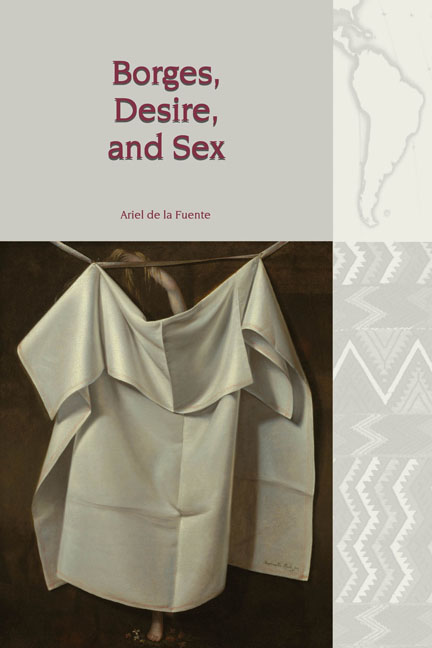Book contents
- Frontmatter
- Dedication
- Contents
- Acknowledgements
- List of Abbreviations
- Introduction
- 1 On Borges’s Sexuality
- 2 Biography in Literature and the Reading of Desire and Sex in Borges
- 3 Borges’s Erotic Library: The Poetry Shelf
- 4 Sir Richard Burton’s Orientalist Erotica: The Thousand Nights and a Night and The Perfumed Garden
- 5 Schopenhauer and Montaigne, Philosophy and Sex
- 6 Desire and Sex in Buenos Aires: Borges’s Poetry on the Arrabal
- 7 Stoicism and Borges’s Writing of Women
- 8 “Emma Zunz”: Sex, Virtue, and Punishment
- 9 “La intrusa”: Incest and Gay Readings
- Conclusions
- Works Cited
- Index
7 - Stoicism and Borges’s Writing of Women
- Frontmatter
- Dedication
- Contents
- Acknowledgements
- List of Abbreviations
- Introduction
- 1 On Borges’s Sexuality
- 2 Biography in Literature and the Reading of Desire and Sex in Borges
- 3 Borges’s Erotic Library: The Poetry Shelf
- 4 Sir Richard Burton’s Orientalist Erotica: The Thousand Nights and a Night and The Perfumed Garden
- 5 Schopenhauer and Montaigne, Philosophy and Sex
- 6 Desire and Sex in Buenos Aires: Borges’s Poetry on the Arrabal
- 7 Stoicism and Borges’s Writing of Women
- 8 “Emma Zunz”: Sex, Virtue, and Punishment
- 9 “La intrusa”: Incest and Gay Readings
- Conclusions
- Works Cited
- Index
Summary
Criticism has identified essentially two types of female characters in Borges's literature. On the one hand, there are a few texts in which women establish love relationships with male protagonists, such as “Ulrica” or “El congreso.” On the other, more frequently, women in his literature seem to be defined by negative qualities and conflictive contexts. This last group (which is the one that has garnered most of the attention) includes women that appear to be reduced to mere instruments of men's desires (“La intrusa”) or that threaten men with their criminal conduct (“Emma Zunz”).
Although at first glance the qualities that define these two groups seem capable of explaining Borges's representation of women, I find them insufficient. There are two problems, I think, with the way Borges's female characters have been approached. The first is that this critical consensus has been built upon a few scenes and circumstances that have acquired the status of classic moments in Borges's literature and, thus, it is based on the study of a limited number of texts, most of them narrative fictions. It is symptomatic in this respect that, for example, the French editor of Borges's works thinks that Emma Zunz and Ulrica are the only two females characters in Borges's literature, which simply omits La viuda Ching and others that, even though they did not lend their names to the title of a short story, play central roles in other tales, such as “Pedro Salvadores” or “Juan Muraña.” The second problem is that the analysis of these texts has not sufficiently taken into account other components of Borges's work. One of these neglected components is philosophy, which has as much influenced his thoughts about women as it has shaped other topics of his literature, including male figures or even something apparently as distant and unrelated to female characters as his conceptions of time. In other words, criticism has tended to consider women in Borges almost as a category in itself while in fact (and inevitably) women also bear the mark of Borges's more general philosophical and ethical preoccupations.
In this chapter, I want to propose another reading that relies not only on an analysis of Borges's short stories but also on his nonfiction prose and, to a lesser extent, on his poetry.
- Type
- Chapter
- Information
- Borges, Desire, and Sex , pp. 145 - 172Publisher: Liverpool University PressPrint publication year: 2018

